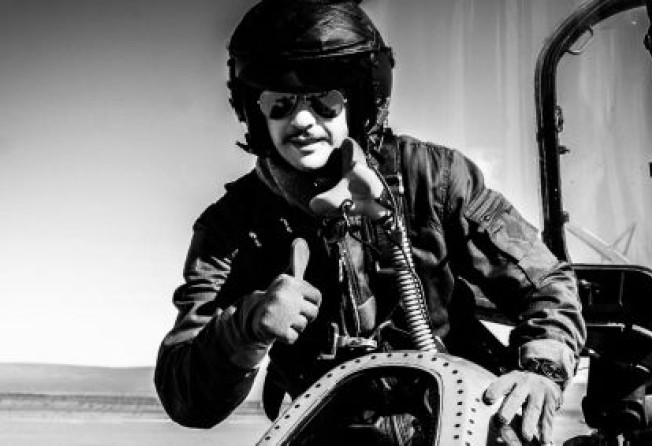Pilot Turned Photographer Olivier Lavielle Captures Historical Aviation with WWII Planes
"I want to keep them in their time."

French photographer Olivier Lavielle specializes in black and white and desaturated images of planes and cars from the 1930s, shot against the background of the American desert. With his work newly featured at print studio YellowKorner, he tells Adrienne Chum about his love for all things old.
HK Magazine: What got you into planes?
Olivier Lavielle: I used to work in aviation. It’s my passion, actually: When I was studying at university I had a great summer job with Air France and when I finished school at 22, I started as a flight attendant. I started to fly for my own pleasure and became a private pilot. I have been flying planes since I was 25.
HK: Why the old stuff?
OL: There is more character in them: their design and their mechanics. Modern jets don’t have it. On modern planes, you just push one lever and it flies. Everybody can fly modern jets. But an old one, you have to communicate with it, listen to it, feel it. So you have to be a great pilot, you have to know the mechanics. When you enter an old plane, you feel it is something very special. You smell the oil, there is no electrical motor. And it becomes less a machine and more the partner of your flight. Aircraft today all look the same, but old planes don’t, and they don’t fly the same—they’re much more like a person.
HK: Do you ever shoot modern planes?
OL: I only do older planes. Take the [Boeing] B17: Today, engineers make planes, but during this time in human history, it wasn’t just the engineers. For example, the B17 protected Europe and bombed the Nazis. Each B17 has a sentimental journey—it’s not really a plane, it’s a hero itself. Modern planes don’t have this background of history, so there is no interest for me. The photographs are not just photos, they are a tribute to those who flew these aircraft.
HK: Why shoot in black and white or desaturated colors?
OL: Photography links people from different cultures and times. I like black and white and pale colors because I want to keep them in their time: When these aircraft were in use there was no color photography. Their place is in history, not in the modern era, so I wanted to distinguish this. Between the early 30s and the 70s, we made stuff to be immortal. Today when you make something, you can only use it for a few years before it breaks—just tools we use before we throw them away. But these aircraft, if you had one you could give it to your son, who could give it to his son, and keep it forever. Those planes still fly.
HK: What about cars?
OL: It’s linked with aviation. Not all pilots can own their own planes, but all the pilots are passionate about mechanics. If you want to bring the mechanics home, you have no choice but to get a car. I love old cars and I love to spend hours fixing the engine, taking care of it. I know that I can keep my car forever, and it’s not something you can say about the iPhone.
HK: You love World War II planes—what about tanks?
OL: No. It’s a weapon. For example, the B17 was the grandfather of the 747, and from this plane we changed the world. It’s not really a weapon, it’s a part of humanity. Sure, its first purpose was for war, but at the end of the war it changed the world. I’ve tried to find the purpose of a tank, and really it’s just killing people. It doesn’t bring people together.
Check out Lavielle’s photos or buy a print at YellowKorner, 3/F, IFC Mall, 8 Finance St., Central, 2578-5888, yellowkorner.com.